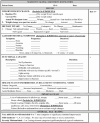Prevalence, incidence, and complications of malnutrition in severely injured patients
- PMID: 39856269
- PMCID: PMC11761767
- DOI: 10.1007/s00068-024-02711-8
Prevalence, incidence, and complications of malnutrition in severely injured patients
Abstract
Background: Severely injured patients may suffer from acute disease-related or injury-related malnutrition involving a marked inflammatory response. This study investigated the prevalence and incidence of malnutrition and its relation with complications in severely injured patients admitted to the intensive care unit (ICU).
Methods: This observational prospective cohort study included severely injured patients (Injury Severity Score ≥ 16), admitted to the ICU of five level-1 trauma centers in the Netherlands and United States. Malnutrition was defined as a Subjective Global Assessment score ≤ 5. Complications included systemic-, surgery-, and fracture-related complications, pneumonia, urinary tract infection, deep venous thrombosis, and pulmonary embolism. In-ICU and in-hospital mortality were recorded separately. The complication rate was compared between patients who had or developed malnutrition and patients who remained well-nourished, using multivariable logistic regression analysis.
Results: Of 100 included patients, twelve (12%) were malnourished at admission. Of the 88 well-nourished patients, 44 developed malnutrition during ICU admission, (ICU incidence 50%, 95% confidence interval [CI] 40-60%). Another 18 patients developed malnutrition at the ward (overall in-hospital incidence 70%, 95% CI 61-80%). The 62 patients who developed malnutrition and 12 patients who were malnourished upon admission had more complications than the 26 patients who remained well-nourished (58% vs. 50% vs. 27% respectively; p = 0.03; Odds Ratio 3.4, 95% CI 1.2-9.6).
Conclusions: 50% of severely injured patients developed malnutrition during ICU admission, increasing to 70% during hospital admission. Malnutrition was related to an increased risk of complications. Recognition of sub-optimally nourished severely injured patients and assessment of nutritional needs could be valuable in optimizing their clinical outcomes.
Level of evidence: Level III, Prognostic/Epidemiological.
Keywords: Complications; Intensive care unit; Malnutrition; Severe injury; Severely injured.
© 2025. The Author(s).
Conflict of interest statement
Declarations. Competing interests: The authors declare no competing interests.
Figures
References
-
- Norman K, Pichard C, Lochs H, Pirlich M. Prognostic impact of disease-related malnutrition. Clin Nutr. 2008;27(1):5–15. - PubMed
-
- White JV, Guenter P, Jensen G, Malone A, Schofield M, Academy Malnutrition Work Group. Consensus statement: Academy of Nutrition and Dietetics and American Society for Parenteral and Enteral Nutrition: characteristics recommended for the identification and documentation of adult malnutrition (undernutrition). J Parenter Enter Nutr. 2012;36(3):275–83. - PubMed
Publication types
MeSH terms
LinkOut - more resources
Full Text Sources
Medical
Research Materials



